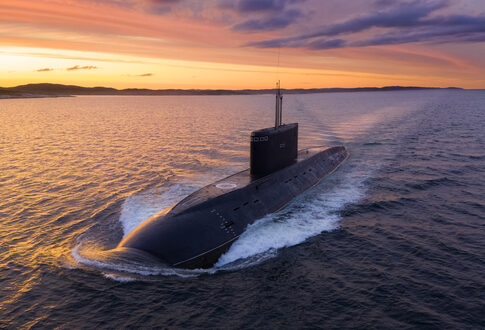NATO has commenced one of its largest military exercises in decades, involving around 90,000 personnel, spanning the Baltic region amid heightened tensions with Russia. The exercise, known as Steadfast Defender 2024, underscores the alliance's readiness to defend its members and send a clear message to Moscow. This comes as President Joe Biden confirmed that U.S. weapons are now being used inside Russia, further intensifying the geopolitical landscape.
The drills, which began earlier this week, involve extensive land, sea, and air operations, highlighting NATO's capacity for large-scale, multi-domain operations. Approximately 50 ships, including aircraft carriers and destroyers, 80 fighter jets, helicopters, and drones, along with over 1,100 combat vehicles, are participating in these maneuvers. The exercises will cover vast areas from the North Atlantic to Eastern Europe, emphasizing the alliance’s ability to conduct operations across thousands of kilometers and in varying conditions.
NATO leaders are planning routes to rush American soldiers to the Russian border. This is an insane escalation towards a hot war with Russia.
They need to be gone. pic.twitter.com/TBs2zUjYqq— David Kurten (@davidkurten) June 4, 2024
In Estonia, the Ramstein Alloy 24-1 exercise features 20 fighter jets from six NATO allies, including Germany, Spain, and Poland, alongside new members Finland and Sweden. This exercise focuses on air policing and rapid response scenarios to enhance NATO’s airspace security. The participation of early warning and air-to-air refueling aircraft aims to ensure extended operational readiness and integration among member states .
Meanwhile, in Poland, the Dragon-24 exercise involves a challenging river crossing operation by troops from nine NATO countries, including the U.S., UK, and Germany. This exercise aims to test logistics and cooperation in defense scenarios, reflecting lessons learned from the ongoing conflict in Ukraine. The choice of winter conditions for these drills adds an additional layer of difficulty, showcasing NATO's commitment to rigorous training.
🕊 NO TO WAR! NO TO NATO!
Let's have PEACE ☮ marches in every European capital every week-end!
Hungary 'Peace March':
Huge crowds gathered on the streets of the capital Budapest to oppose NATO’s actions they believe are provoking war in Europe. pic.twitter.com/u2WqlIQEof— Robin Monotti (@robinmonotti) June 2, 2024
Northern Coasts 2024, another significant component of these drills, focuses for the first time on high-end warfare, including amphibious operations, air defense, and strikes from sea to land. This exercise features 30 warships and 3,200 personnel from 14 nations, operating primarily off the coasts of Estonia and Latvia. The emphasis on high-end warfare reflects the evolving security dynamics in the Baltic Sea, particularly in light of Russia's aggression in Ukraine.
President Biden’s recent affirmation that U.S. weapons are now being used inside Russia marks a significant escalation. This statement follows reports of advanced weaponry being supplied to Ukrainian forces, enabling them to strike deeper into Russian territory. The geopolitical implications of this development are profound, potentially signaling a shift in the conflict's dynamics and NATO's strategic posture.
As these exercises unfold, they demonstrate NATO’s solidarity and preparedness in the face of Russian threats. The alliance's largest drills since the Cold War serve as a potent reminder of its collective defense commitment, reinforcing the security of member states and deterring potential aggressions.
NATO’s proactive stance, coupled with the deployment of U.S. weapons inside Russia, underscores a pivotal moment in the ongoing conflict. These developments are likely to have significant repercussions, shaping the strategic landscape in Europe and beyond in the coming months.

